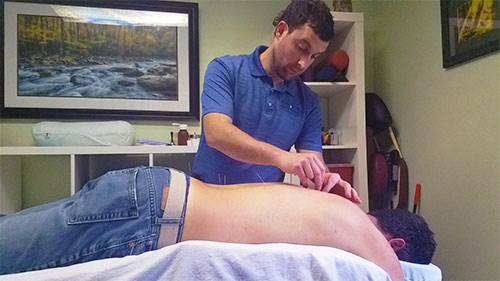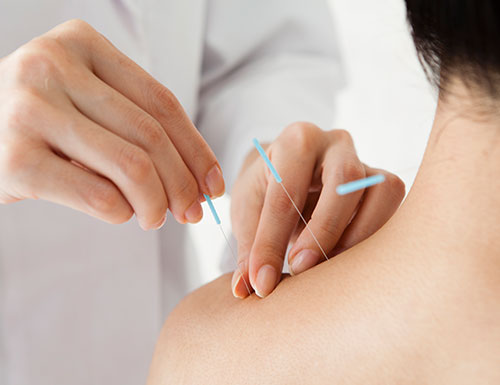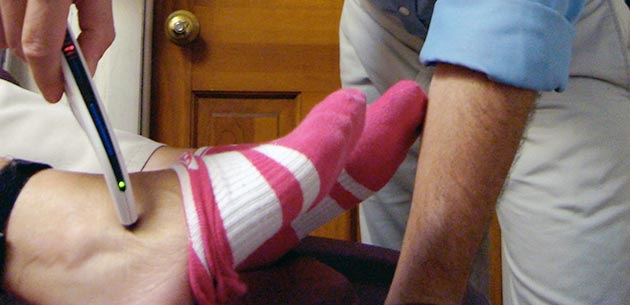
How does Acupuncture work?
This is probably the most common question I get when I talk about my profession. The answer we learned in school was very basic: Acupuncture moves blood and qi energy to balance the body. It's a very Eastern explanation that I find doesn't resonate with many of my clients. Luckily for me, my thirst for knowledge helped unearth a very Western explanation when doing research for my book.
The Body Electric by Dr. Robert Becker is a classic Western text for health care practitioners. It's a thick book, but it is really well written and scientifically sound. Dr. Becker got a grant from NIH in the early 70's to try to determine how acupuncture works. His theory was:
The acupuncture meridians, I suggested, were electrical conductors that carried an injury message to the brain, which responded by sending back the appropriate level of direct current to stimulate healing in the troubled area. I also postulated that the brain's integration of the input included a message to the conscious mind that we interpreted as pain. Obviously, if you could block the incoming message, you would prevent the pain, and I suggested that acupuncture did exactly that.
Any current grows weaker with distance, due to resistance along the transmission cable. The smaller the amperage and voltage, the faster the current dies out. Electrical engineers solve this problem by building booster amplifiers every so often along a power line to get the signal back up to strength. For current measured in nanoamperes and microvolts, the amplifiers would have to be no more than a few inches apart—just like acupuncture points!
(p. 234)...
If the points really were amplifiers, then a metal needle stuck in one of them, connecting it with nearby tissue fluids, would short it out and stop the pain message. And if the integrity of health really was maintained by a balanced circulation of invisible energy through this constellation, as the Chinese believed, then various patterns of needle placement might indeed bring the currents into harmony.
(p. 235)
Along the meridians [we] measured... we found the predicated electrical characteristics at half of the points. Most important, the same points showed up on all the people tested. Since acupuncture is such a delicate blend of tradition, experiment, and theory, the other points may be spurious; or they may simply be weaker, or a different kind, than the ones our instruments revealed. Our readings also indicated that the meridians were conducting current, and its polarity matching the input side of the two-way system we'd charted in amphibians, showed a flow into the central nervous system.
(p 234–236)
Acupuncture points have a unique ability to create change in the body when the electricity is moved. The metal in the needle helps to move the electricity, moving the body closer to balance.

Trigger Point Acupuncture
The easiest example of a trigger point is a muscle knot. Trigger points frequently occur at specific places that were determined by Dr. Janet Travell in the early to mid-1900s. These trigger points cause very specific pain patterns that are sometimes not located in the vicinity of the trigger point. A common example is a temple headache that originates from the neck portion of the trapezius muscles.
The metaphor I use is that of a dam in a river. When a dam is installed, not many changes are seen at the dam, but rather upstream where the water no longer flows like it once did. The needles work by releasing the trigger point and soothing the pain. Many times, the muscle will quiver as it releases and the pain relief can be instantaneous. There can be some soreness afterwards but it feels like the same soreness one feels after going to the gym. The muscle has just released tied-up toxins and needs time to move them.

Non-Needle Acupuncture
Many people do not like needles, but this does not need to stop you from being able to experience the many rewards of Acupuncture. If you are one of these people, but still would like to try Acupuncture, there are alternative ways to treat you without using needles.
"Acupoints” refer to specific spots on the body; one western theory says these are on the fascial tissue system, which conducts electricity. From The Body Electric by Dr. Robert Becker in 1985:
Any current grows weaker with distance, due to resistance along the transmission cable. The smaller the amperage and voltage, the faster the current dies out. Electrical engineers solve this problem by building booster amplifiers every so often along a power line to get the signal back up to strength. For current measured in nanoamperes and microvolts, the amplifiers would have to be no more than a few inches apart – just like acupuncture points!
(p. 234)
The theory continues...
If the points really were amplifiers, then a metal needle stuck in one of them, connecting it with nearby tissue fluids, would short it out and stop the pain message.
(p. 235)
He then received a grant to run further studies.
Our readings also indicated that meridians were conducting current, and its polarity matching the input side of the two-way system we’d charted in amphibians, showed a flow into the central nervous system. Each point was positive compared to its environs, and each one had a field surrounding it, with its own characteristic shape.
(p. 235-236)
In the past 30 years, electrical medicine has become much more sophisticated and widely accepted. I have incorporated machines in my treatments that work on acupuncture points using electricity and thus able to balance the electrical signal in the body, allowing for proper circulation without needles.
The overall treatment is the same process. Talking time, treating time, possibly some other body work, and time for the patient to lay on the table in reflection and rest. Same process, no needles.
See What Our Clients Say
For those of us who can’t handle needles (I myself have tendency to pass out whenever I get a shot) Aaron actually has a wealth of non-needle healing techniques that I’ve found incredibly therapeutic. Over the last year, he has incorporated electrical points, cupping, moxa, and CFT into our sessions. I always walk away from the office feeling refreshed, rejuvenated, and like I have more to reflect upon. Beyond the physical, he can be as technical or as whoo-whoo five-element as you need, so he can cater to anyone’s comfort level in the emotional/spiritual healing process if you’re into it. Even if you do enjoy needle acupuncture, I recommend exploring some other things with Aaron just because you’ll get a more diverse experience. Also, Aaron is just an awesome human being. He’s funny, he’s relaxed, he’s sharp as a tack, and he’ll help you incorporate mind, body, and heart. Can’t recommend him enough!
